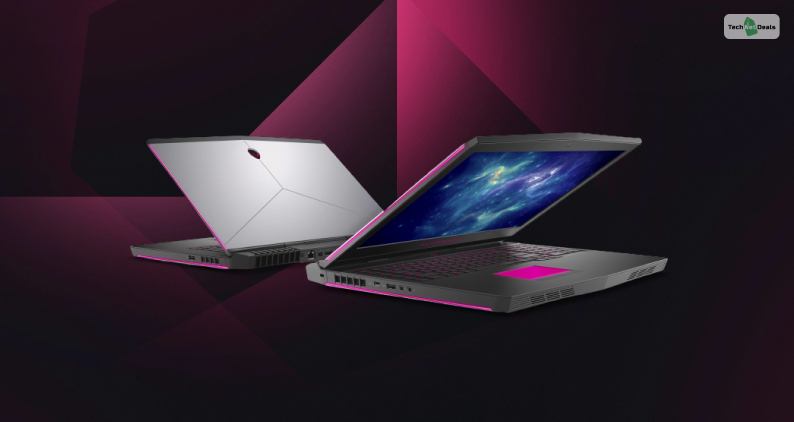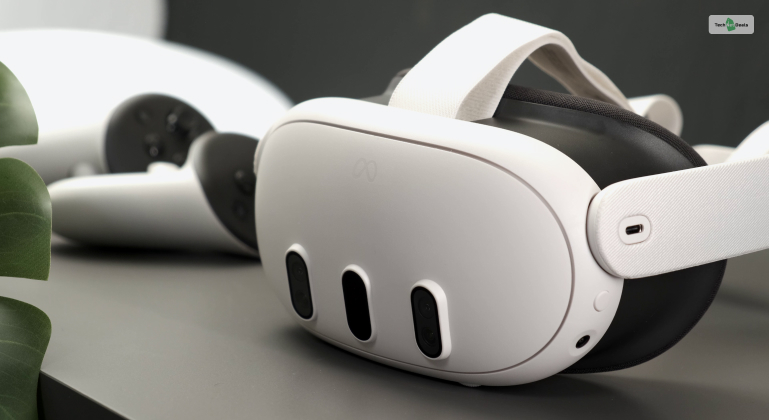
Virtual Reality (VR) is the future of gaming, according to Steam mastermind Gabe Newell, and I couldn’t agree more. Moving beyond the bounds of a keyboard and mouse (and controllers) seems to be the next logical evolution in gaming. While I still wait for days when my neural interface becomes my controller, I will settle for VR headsets like the Meta Quest 3 for now.
While the Oculus Rift and the PlayStation VR were my introduction to VR headsets, it’s the Meta Quest 2 that really stirred things up for me, along with the Meta Quest Pro. It was first announced at the Meta Connect 2023 event and released a month later.
The Meta Quest Pro is undoubtedly the best VR headset so far, but does the Meta Quest 3 have what it takes to stand toe-to-toe with the Pro?
Meta Quest 3 Specifications And Price
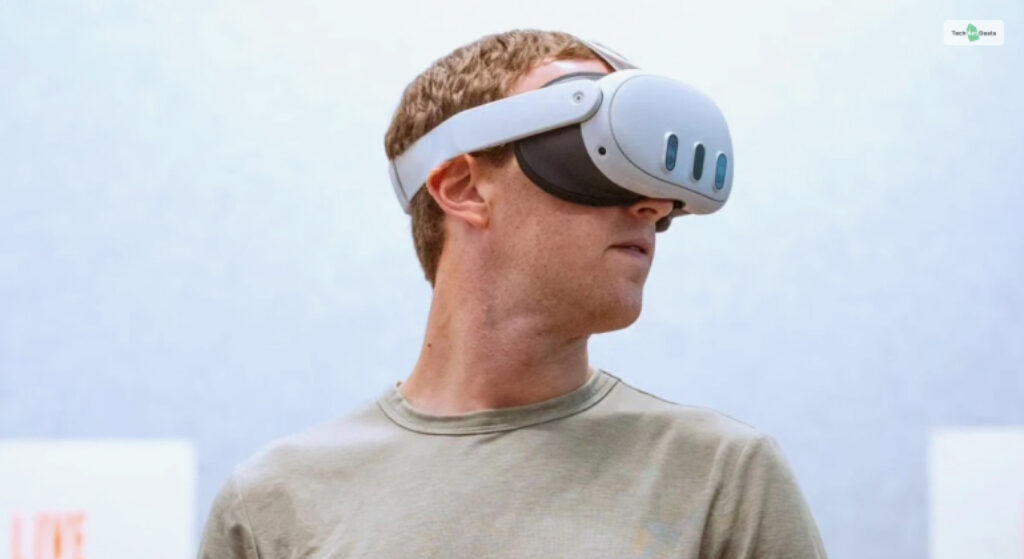
The primary specifications of the Meta Quest 3 are:
| Display | 2x 4K+ LCD glasses (2064 x 2208 resolution each @ 120 Hz refresh rate) |
| Camera | 2x 4 MP RGB camera with 18 PPD |
| Field Of View | 110 degrees horizontal, 96 degrees vertical |
| Processor | Qualcomm Snapdragon XR2 Gen 2 |
| Memory | 8 GB DRAM |
| Storage | 128 GB or 512 GB |
| Audio | 2x Open-Air Speakers, 1x 3.5mm Aux jack |
| Connectivity | Wi-Fi 6E, Bluetooth 5.2 |
| Battery | 4,985 mAh with 18W charging |
| Weight | 1.13 lbs (515 g) |
The Meta Quest 3 price is $499.99 for the 128 GB variant. On the other hand, the 512 GB will cost you $649.99.
Moreover, you can purchase several additional accessories compatible with the Meta Quest 3, like:
- Carrying Case: $69.99
- Charging Dock: $129.99
- Active Straps For Touch+ Controllers: $39.99
- Silicone Facial Interface: $39.99
- Facial Interface & Head Strap: $49.99
You can buy the Meta Quest 3 and all its required accessories from this link here. However, I do recommend reading this review before spending $500 (and more)!
Meta Quest 3 Review: My Experience

The Meta Quest 2 was a good VR headset, which you can get for $250 now that the Quest 3 is here. Meanwhile, the Quest Pro is beyond the hands of most, thanks to its high price point ($900). Therefore, the $500 Quest 3 might be the one that bridges the gap between the two.
While the meta Quest 3 price has been doubled compared to the Quest 2 – is the double price worth it? Let’s find out!
Design: Lighter And Sleeker Than Before
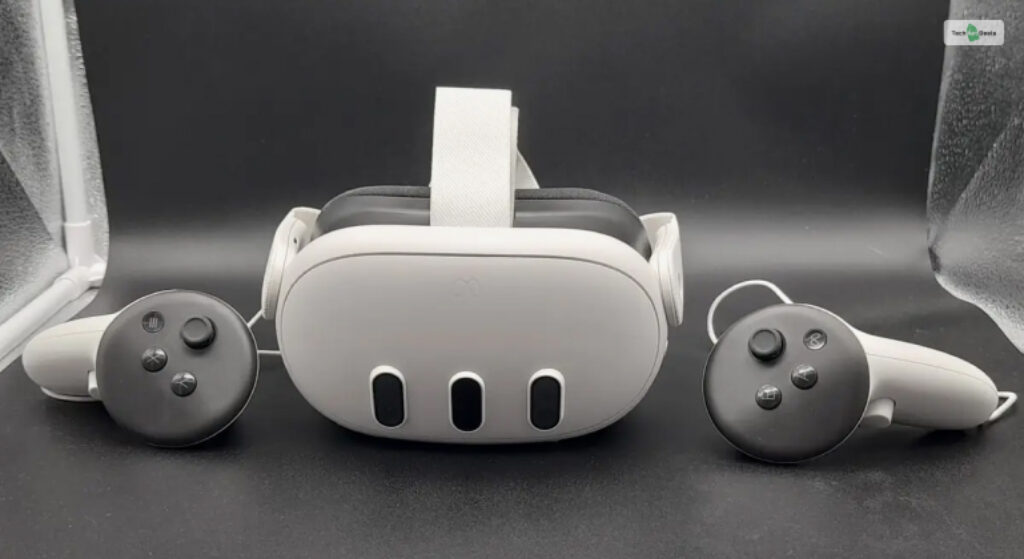
The Meta Quest 3 design leaves no holes barred. The device is big enough to engulf your own face, leaving no room for light or air to enter from anywhere. I like this closed-off design since the Quest 2 often lets light enter to ruin your experience if worn lightly.
Therefore, to make sure this device stays strapped on, Meta has made the strap better and comfortably tighter than before. It did so by using two straps instead of one – one vertical and one horizontal – forming an inverted “Y” strap.
Moreover, I did feel the weight of the Meta Quest 3 was slightly heavier than that of Quest 2. However, I did not feel it much, thanks to its comfortable strap that took some of the load off (somehow).
The insides consist of breathable fabric, which prevents the accumulation of fog and sweat on the glasses. Moreover, they are comfortable, as I had no issues wearing them for three hours straight. You can also adjust how far away the screens are from your eyes, a boon-for me since I wear specs.
Overall, the Meta Quest 3 design is lighter and sleeker than before, which is amazing.
Controllers
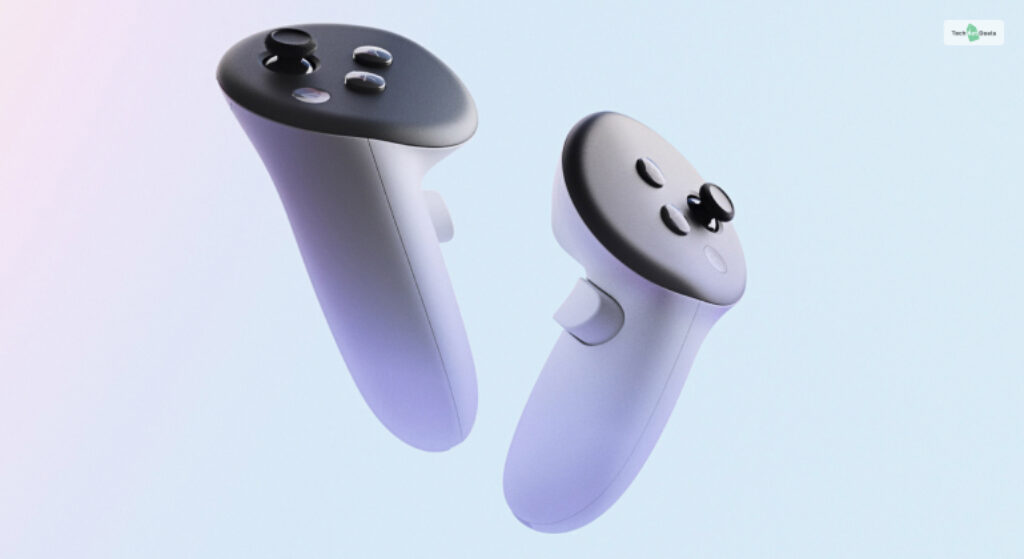
Just like every other VR headset and console like the Xbox One S, you need a pair of good controllers. Regarding the Meta Quest 3, I have zero complaints about its Touch Plus controllers. They are similar to the Quest 2 controllers, still running on AA batteries.
You get two controllers for both your hands, which have nice, firm, grips on them. While both sticks have thumbsticks, a grip button, and rear trigger buttons, their face button layouts are different. The left controller has the X and Y buttons, while the other has the A and B buttons.
Additionally, the left controller has an extra Menu button below the face buttons, while the other has the Meta button. Overall, the controllers look the same as the Quest 2 controllers, only being lighter than before.
Display
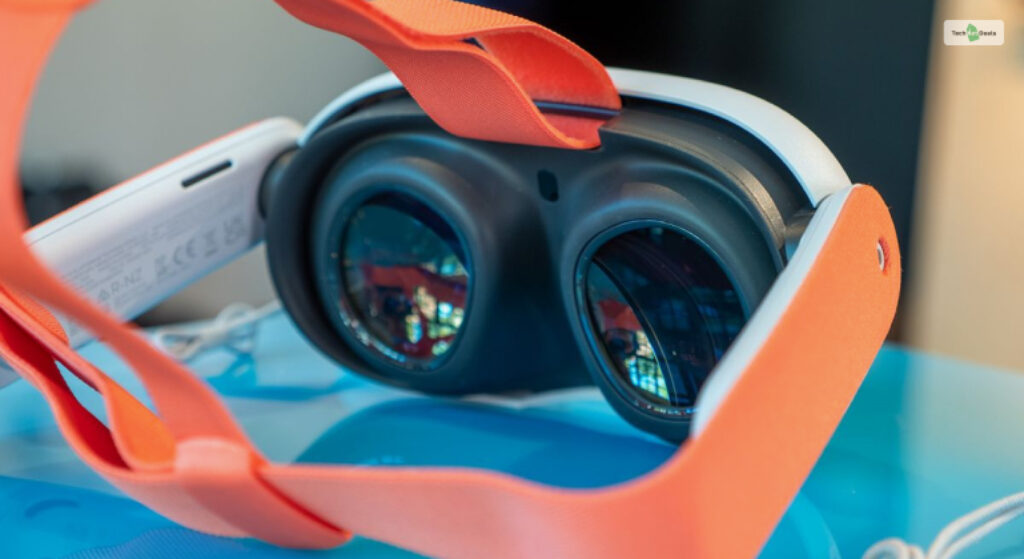
I did notice that the Meta Quest 3 has one major improvement – the display goggles on the inside.
Compare them with the Meta Quest 2, their resolutions are higher this time. While the Quest 2 has two LCDs with 1832 x 1920 resolution each, this has 2064 x 2208 resolution. Therefore, there are significant improvements on the quality of what you see and experience. Both LCDs band together to create a 4K Infinity band, which is what the Meta Quest 3 is all about.
In addition, their refresh rates are higher this time, since you have the option to choose between 72 Hz, 80 Hz, 90 Hz, and 120 Hz. However, 120 Hz is available only as an “Experimental” feature, usable on a few select instances.
Overall, it’s a significant step up from Quest 2, and I enjoy it so far.
Audio
While the audio system remains the same as the Quest 2, the Meta Quest 3 has better audio quality. It sounds richer and more immersive than before, which is a must for VR gaming.
However, my only gripe is that you require wired headsets to connect with the Quest 3. This is because using bluetooth headphones has a lot of lag, which messes with the overall immersion.
Therefore, I recommend pairing the Quest 3 with the best wired Skullcandy headphones, like the Skullcandy Crusher Evo.
Battery
The Meta Quest 3 still has one major gripe – its battery life. As a wireless device, a higher battery life is what every customer needs. However, the Meta Quest 3 provides only 3 hours of battery life – which is not enough for a gamer like me.
Moreover, another gripe of mine is its charging time. You have to charge it up for two hours to use it for three hours. Meta should add the option to attach an extra battery pack (externally), like the battery head strap sold by Oculus.
Performance

Apart from the lighter design and the amped-up-to-eleven displays of the Meta Quest 3, it has another significant upgrade – its performance. I used this device connected with the Asus TUF Gaming F15 to unleash the full potential of its RTX 4060 GPU.
First off , I must say that the addition of mixed reality is a step forward in the right direction. Seeing virtual elements in the real world is amazing, although what you can do with it is still limited. The inclusion of two 4 MP RGB cameras in the front with full-color passthrough is the main deal-maker here.
However, the number of apps that can use this feature is still limited to a handful of titles. I tested only a handful of titles like Knockout League and Yuki, and they all ran smoothly. Therefore, the added power of the Snapdragon XR2 Gen 2 pays off well here.
However, the virtual objects appear grainy, instead of sharp. Meta should push development of mixed reality apps more going forward.
The performance on other VR games are also amazing. I tried out the new Assassin’s Creed Nexus VR, Asgard’s Wrath, and Red Matter 2, both of which ran smoothly at 90 Hz. Unfortunately, the frame rates become choppy if you enable 120 Hz.
Overall, I am happy with the Meta Quest 3 performance. However, I am sad that the Metaverse is still not developing at the pace it should be. Moreover, while VR gaming is the future of gaming, not many are accepting it with open arms.
Meta Quest 3 Final Verdict: Deal Or No Deal?
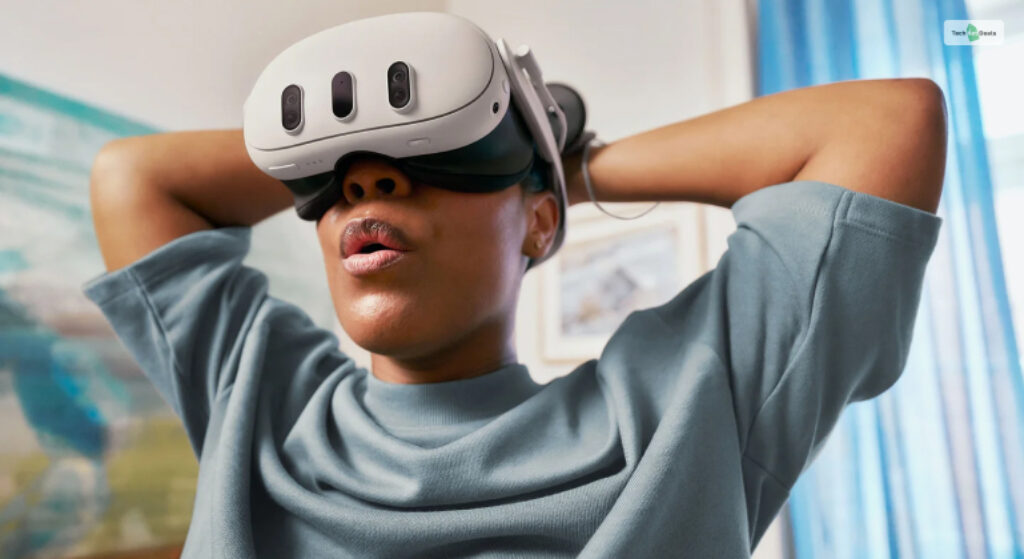
Yes, you should buy the Meta Quest 3 if you have $500 to spend, and are enthusiastic about VR gaming. This is a high-quality VR headset that will impress VR puritans, especially if you want an actual mixed reality experience. However, the limited selection of titles on the Metaverse, and its weak 3-hour battery life dim my interest to some extent.
| Pro | Cons |
|---|---|
| • High-quality, ergonomic build and design • Firm controllers • Amazing 4k displays with 120 Hz refresh rate • Mixed reality has a lot of potential in the future • Good performance due to Snapdragon processor | • High-quality, ergonomic build and design • Firm controllers • Amazing 4k displays with 120 Hz refresh rate • Mixed reality has a lot of potential in the future • Good performance due to the Snapdragon processor |




